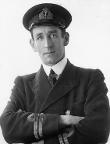Written in seven scenes (or episodes) Nelson focuses largely on Admiral Lord Nelson's involvement in the naval engagement fought by the Royal Navy against the combined fleets of the French and Spanish Navies, during the War of the Third Coalition (August–December 1805) of the Napoleonic Wars (1803–1815). The first two scenes explore aspects of nelson's character, both as a man and a naval commander. As a critic from Brisbane's telegraph writes in the lead-up to the 1933 broadcast, 'Lord Nelson's outstanding characteristics were his sense of humanity and his consideration for other people.' The preview goes on to note:
The first episode portrays a Press Gang rounding up a seaman in Portsmouth in the year 1783, and ends with the pitiful plea of the captured man not to be sent to "Flogger" Danby's ship, where the "cat' is always much in evidence. By contrast episode 2 is set on the poop of Nelson's frigate, the "Albemarle," just home after two years In the West Indies. The whole crew volunteers to serve again with Nelson and there Is a moving scene when an old able seaman asks Nelson if he may shake his hand. "I'll be proud to tell my wife and children and grandchildren," he says, "that I've shaken hands with Captain Nelson." A few rapidly-moving scenes cover the fateful days to October 21 and the last episode will take listeners through the essential events of the Battle of Trafalgar Itself, ending with the sad final scene In the Victory's cockpit ('Trafalgar Day: Special Play to be Broadcast,' p.14) .

